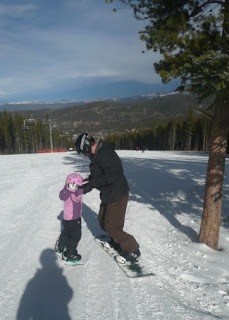My quest for the
Hamilton family, and what happened to them after they left Breckenridge, Colorado around the turn of the century has certainly not ended: not even close. I have left them alone for a few weeks, and am now seeking the family in the 1900 United States Federal Census.
What Do I Already Know?
 |
| 1885 Colorado State Census |
Robert Hamilton married Anna Jane Sadler on 11 Feb 1885 in Grundy County, Illinois. By June of 1885 when the state census was taken in Colorado, they were residing in Breckenridge, Summit County. They lived in that town at least until 1888, as we can track them through business and newspaper mentions.
The family can be found again in 1910, now living in Denver, Colorado. They appear to have resided for a time in Oxford, Nebraska, which sits on the county line of Furnus and Harlan Counties. In 1911, Robert Hamilton again owns land in Summit County, a ranch along the Blue River. He travels back and forth in successful business ventures for at least the next couple of years. Anna appears to have died by or in the year 1914, according to a biography written about her father, which was published in Illinois.
Robert was born in Canada about 1857, and Anna in Illinois on 2 September 1862. Their families appear to have been connected by marriage in previous generations.
They were reported by the local newspaper in Breckenridge to have had children, but the number, sex, and names of those children were left out.
Anna had at least one brother who also resided in Colorado, George W. Sadler resided in Divide, of El Paso County. He was elected to a local office in Nov of 1899, so he had to have been there for at least a few months, if not a year or more, to gain the friendship of enough voters. He married Lillian T. Unknown and together they had at least three children.
The Search
I am starting in the HeritageQuest Online database, accessible through my local library system, and searching a combination of the following parameters to locate the family in the 1900 Census.
Robert: would be about 43 years of age, born Canada.
Anna: 38 years old, born Illinois.
Assuming the children were born sometime in the first five years of marriage and I know there were at least two, they would be at oldest 15 years, and born in Colorado or Nebraska.
Previous, more detailed searches have not been able to determine any matches, so I am leaving this process vague intentionally, hoping to find even a sliver of hope.
I was given 225 results to scroll through, using just "Hamilton" in the name fields, 1900 Census in Colorado. Nearly every county is listed.
- Summit County: three results, none match.
- El Paso County: no matching results, out of 17 results.
- Arapahoe County (where Denver would be located at this time): 63 results, no matches.
Having eliminated the obvious options, I am left to simply go county by county down the list. The results were... nothing! Not a single even potential candidate for either Robert or Anna.
Moving on to Nebraska... Neither Furnas nor Harlan Counties were able to produce the correct Hamilton's. Once again, I am left to search county by county.
Only one possibility was found in Nebraska: Robert Hamilton, age 42, born Canada, found in Douglas County, in Omaha. He is of the right age and race. The image is difficult to read at best, so I was unable to determine from this source if he was listed with family. However, there were no Anna Hamilton's that came up for this area, and if she had been on the census page with him, then she would have been listed in the results.
Once again relocating the search, this time to Illinois. I know from her diaries that Anna really never liked living in Colorado, and especially in Breckenridge, and she pined for her friends and family back home. It's certainly possible that they went back there, especially since Robert also had ties to Grundy County.
My search, once again, comes up empty. Nothing.
 |
Breckenridge, Colorado.
Copyright Jen Baldwin, Ancestral Journeys, 2012 |
Broadening my scope just one more time, I attempted a more detailed search for Robert Hamilton, born in Canada, between the ages of 41-50, all states, for the 1900 Census. Six states came up with a possible match: Nebraska (see above), Massachusetts, Michigan, Wisconsin, North Dakota, New York. None of them had a wife named Anna, or seemed to match any of the other information I currently have access to. A similar search was conducted on Anna Hamilton, and three possibilities were found: two of which were already widowed, and we know that Robert outlived Anna. The third was listed as married, but her husband was not identified in the same census record. She was found in Campaign County, Illinois, with three daughters, all born in Illinois. However, those daughters list their parents place of birth as Illinois for both the mother and the father, so already, there is discrepancy. However, it is a valid candidate.
A search on Ancestry.com for the Nebraska result of Robert Hamilton lists his spouse as Clara, and she is the wrong age (not even in the ball park).
What happened to the Hamilton family? Obviously, there is more searching to do... I have records on Robert from another researcher that date from 1910, 1911, 1912 and 1916, all from Colorado. But, the 1910 and 1920 census records have yet to be identified. Nothing yet has been located on Anna's death or burial. And Robert's death? Also, in the "yet to be determined" category.
More to come, certainly, on this mysterious family.



















